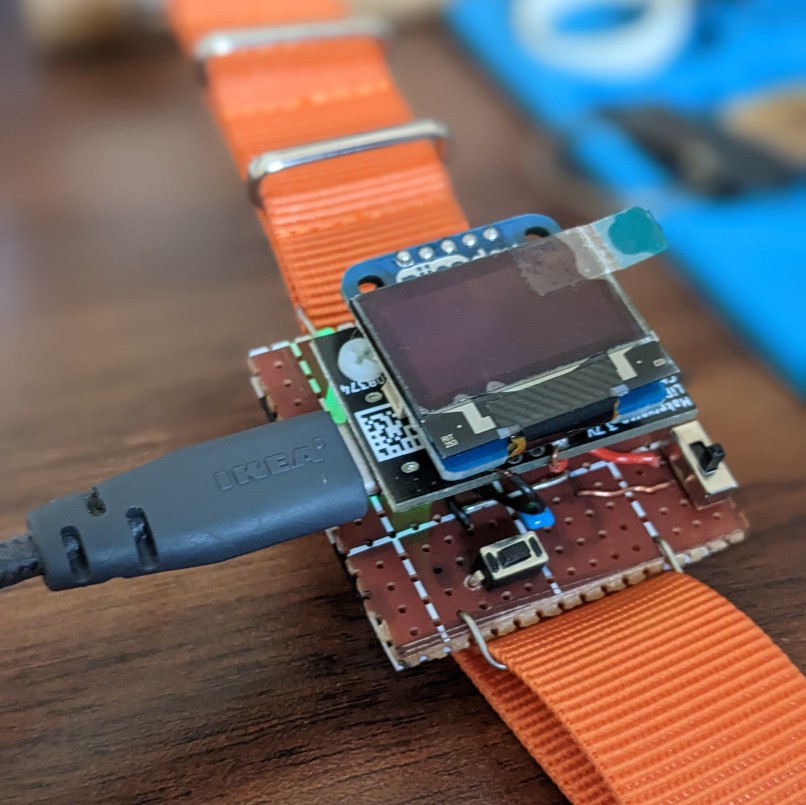While I initially basked in the success of producing a “functional” wearable, I had been making notes of what to consider in my next revision of this project. The biggest issue I found with the initial version was the power drain and its impact on the single-use batteries. In a surprise to few, powering an OLED with a ATtiny and no power saving contingencies make for a very short operation run. In fact, on my extended test with a fresh CR2032 cell I found the watch barely lasted 24 hours before the battery was completely drained. As a result of this testing, I aimed to implement a more sustainable platform to build upon for my experimentation.
It was at this point I conducted some initial research into the
power saving options for the ATtiny itself. However there was a more
pressing factor that that I sought to rectify, the ergonomics. While
my first sketches portrayed the watch as being a stacked design with
the battery compartment at the bottom of the body, I quickly realised
that with the height of the headers this unit was going to be close
to 30mm tall at least! Hence the last minute change of mounting the
battery offset to the main body of the watch. In this revision, I
wanted to implementing a rechargeable LiPo battery system that
allowed for more flexibility with the placement of its components.
Pairing a 150mAh battery with a USB-C charger board from Core
Electronics proved to be the best solution.

Following this addition, I learnt a harsh lesson on building in some form of power isolation when implementing rechargeable capabilities. I found that connecting the USB-C power while the watch was on caused the ATtiny to go into a fault state. With no avenue for a reset button on the watch I had to disconnect the battery (mangle the JST connector). Upon further reading it seemed that my LiPo board did not support simultaneous charging and power output. Hence the addition of a micro SPDT switch to ensure that I could isolate the rest of the components while the device was being charged. Yes, this meant that the time would be reset every time I charged the thing, however I felt that this was a necessary inconvenience at least for the time being.
One additional modification to streamlining this project was switching from four pin tactile switches to two pin variants. This was a game changer in my part placement where I no longer had to fear if I had placed a switch in the wrong orientation relative to ground. I maintained the one button setup for this revision, which I have grown to regret especially with the dubious accuracy that the current code provides. I will not consider an RTC as I feel that compromises this project’s goal of simplicity with the parts.
That being said, the modifications for Rev. A have amounted to a properly wearable watch that I have been able to take out and about in its skeletal form. After some time with the watch in this form I have pulled myself together to tackle the final hurdles for this device: the accuracy, power consumption and a more aesthetic presentation.
 Maso
Maso
Discussions
Become a Hackaday.io Member
Create an account to leave a comment. Already have an account? Log In.